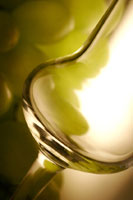Rakia Bar, since 2006
Home / About rakia / Brandy history
About rakija

The word brandy ( 'rakija' in Serbian ) is of Arab origin. It originates from the word 'al-rak', which means 'sweat', freely translated. The word arrived in our regions with Turks in the 14th and 15th century.At the beginning, it denoted the beverage arak which was produced in Indonesia, Malaysia and other Far Eastern countries by distillation of fermented juice or the wines made of special sorts of palms.
Back in the 6th century B.C. Aristotle wrote that sea water, as well as wine and other liquids, could be turned into drinking water if they underwent the process of distillation. However, this conclusion was not used long after, until Arab alchemists of the 8th and 9th century created alambics, which were used to produce perfume bases. These instruments were also used by the alchemists of that period in order to obtain gold from metals ( iron and lead ).
Back in the 6th century B.C. Aristotle wrote that sea water, as well as wine and other liquids, could be turned into drinking water if they underwent the process of distillation. However, this conclusion was not used long after, until Arab alchemists of the 8th and 9th century created alambics, which were used to produce perfume bases. These instruments were also used by the alchemists of that period in order to obtain gold from metals ( iron and lead ).

The knowledge on distillation process was quickly spread across Europe and the production of distilled alcoholic beverages that were called 'the water of life' started in many countries. It is not at all easy to find out the exact origin of a spirit because the recipes quickly became a part of national pride. The production of 'national drinks' began in European countries in the 15th century, with the appearance of gin in England, schnapps in Germany, aquavit in Scandinavia, vodka in Russia and Poland and BRANDY in the Balkans.
At the beginning, these beverages were used to therapeutic and medical purposes, but also to put consumers in a good mood.
Serbs did not start producing brandy until the end of the 19th century, when Serbian vineyards had already been destroyed by philoxer and wine production had been reduced. Brandy was made from various fruit, usually plums.
Today, brandies in Serbia are made from various fruit, although plum brandy still has primacy.
At the beginning, these beverages were used to therapeutic and medical purposes, but also to put consumers in a good mood.
Serbs did not start producing brandy until the end of the 19th century, when Serbian vineyards had already been destroyed by philoxer and wine production had been reduced. Brandy was made from various fruit, usually plums.
Today, brandies in Serbia are made from various fruit, although plum brandy still has primacy.

BRANDY FORCE
The force of brandy is determined by the quantity of alcohol which brandy contains and which is expressed by volume parts or volume percentage, which is marked as %vol.Volume percentage is the number of litres of pure ethanol ( of 100% purity ) in 100 litres of a spirit, i. e. in the mixture of water and alcohol which constitutes that spirit.
In everyday speech the force of alcohol is still sometimes expressed in grades. Units can simply be converted by the following equivalence:
1 grade = 2.46 vol%
The most practical and fastest way to determine the force of brandy is to use alcometer.
The force of brandy is determined by the quantity of alcohol which brandy contains and which is expressed by volume parts or volume percentage, which is marked as %vol.Volume percentage is the number of litres of pure ethanol ( of 100% purity ) in 100 litres of a spirit, i. e. in the mixture of water and alcohol which constitutes that spirit.
In everyday speech the force of alcohol is still sometimes expressed in grades. Units can simply be converted by the following equivalence:
1 grade = 2.46 vol%
The most practical and fastest way to determine the force of brandy is to use alcometer.